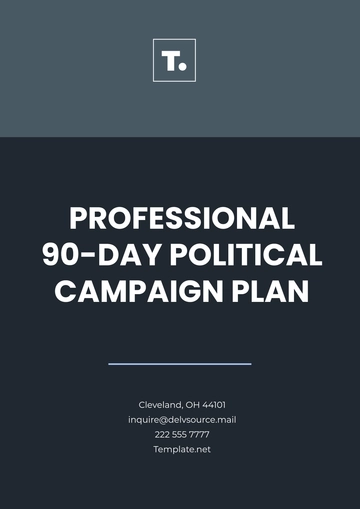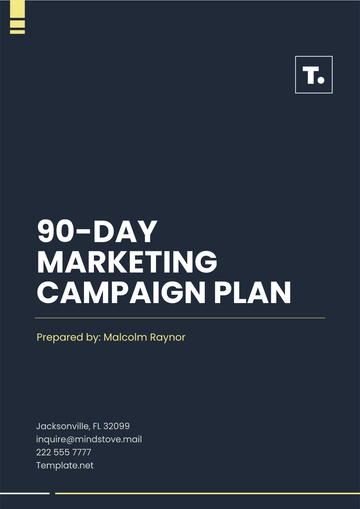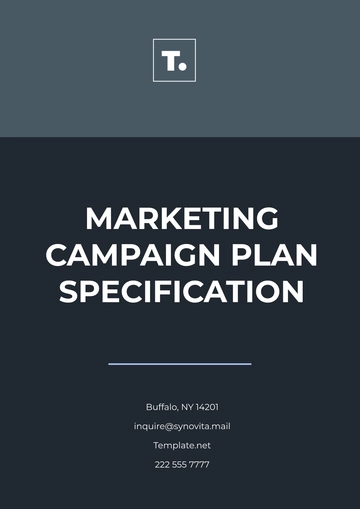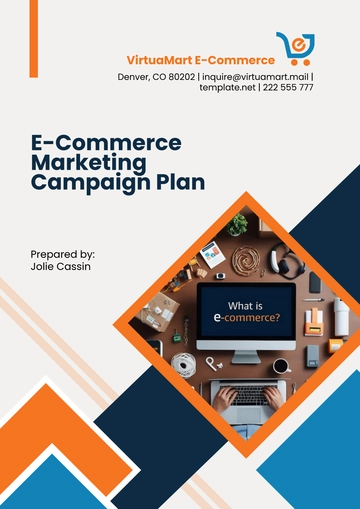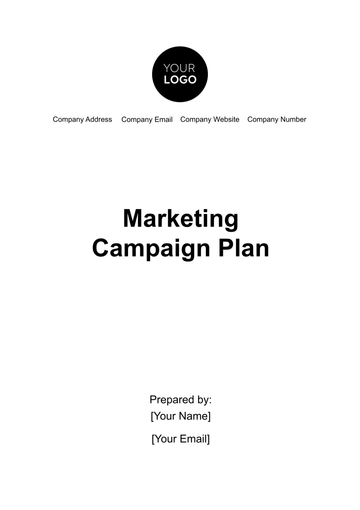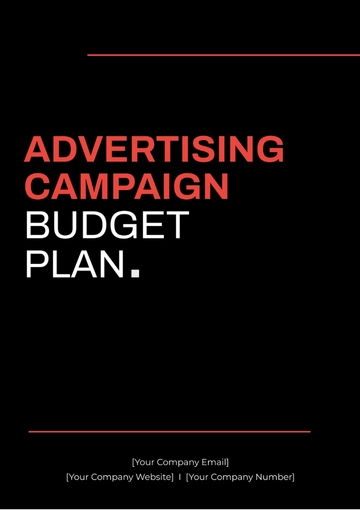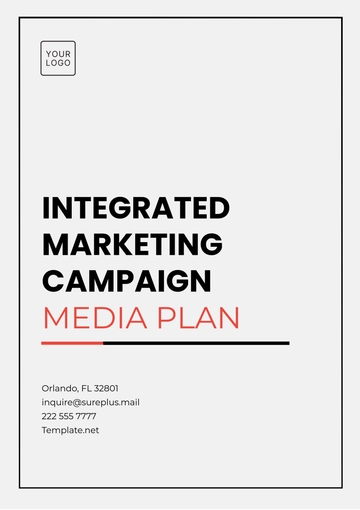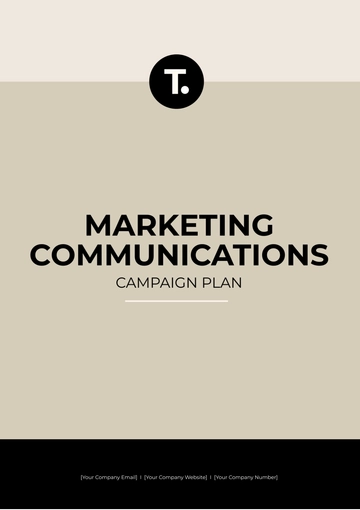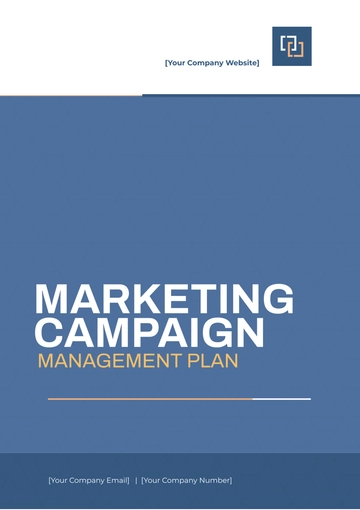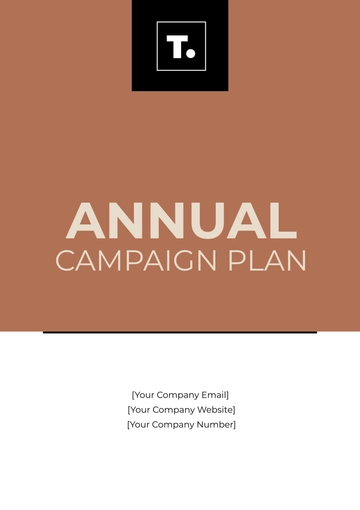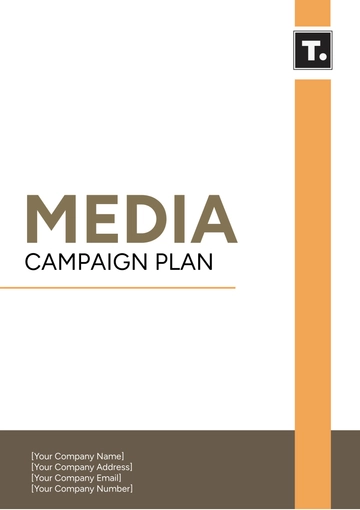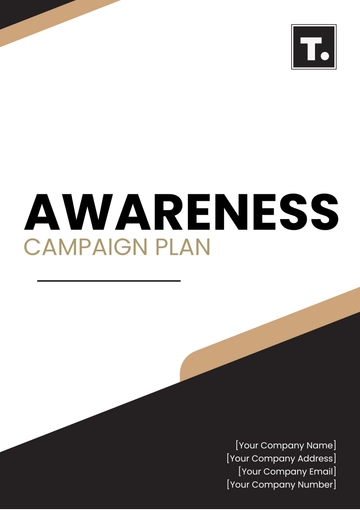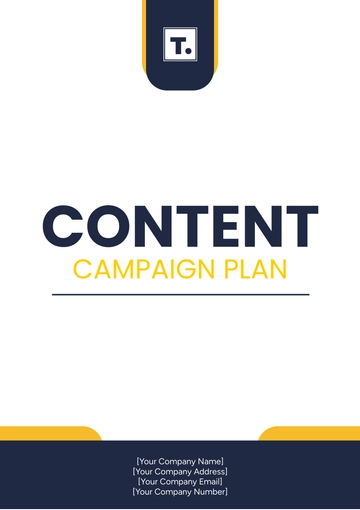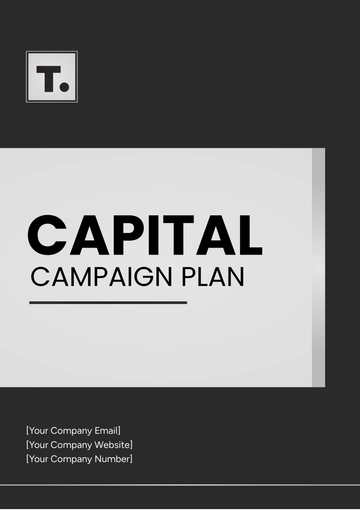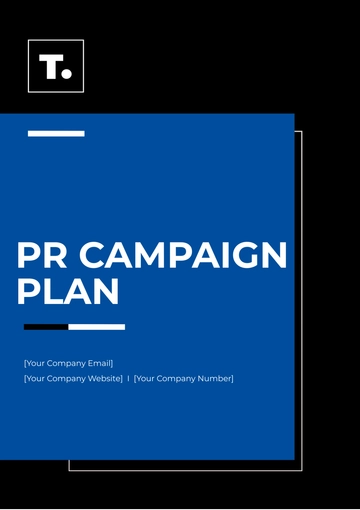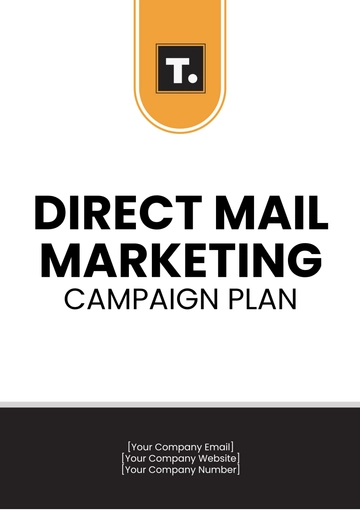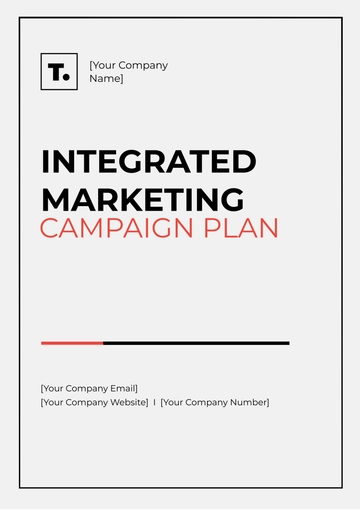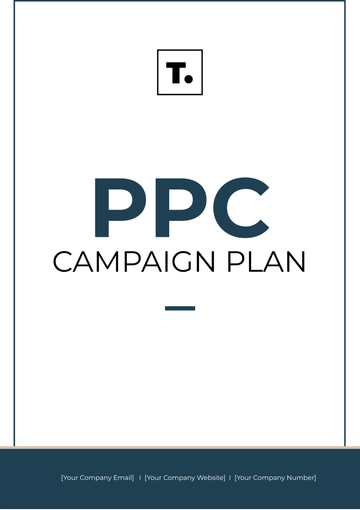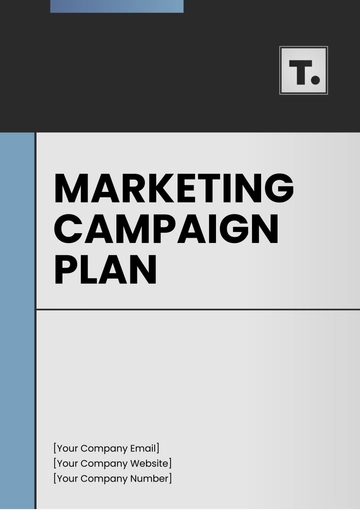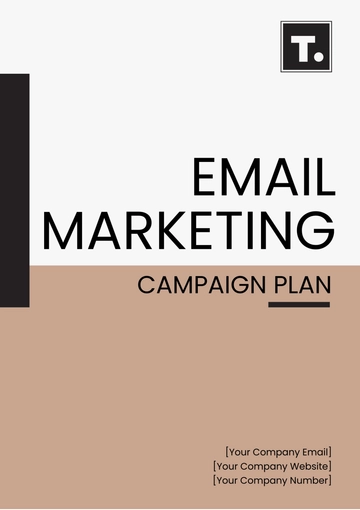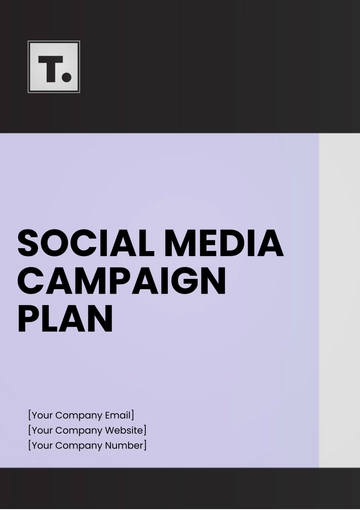Free Advertising Yearly Campaign Review and Plan Document
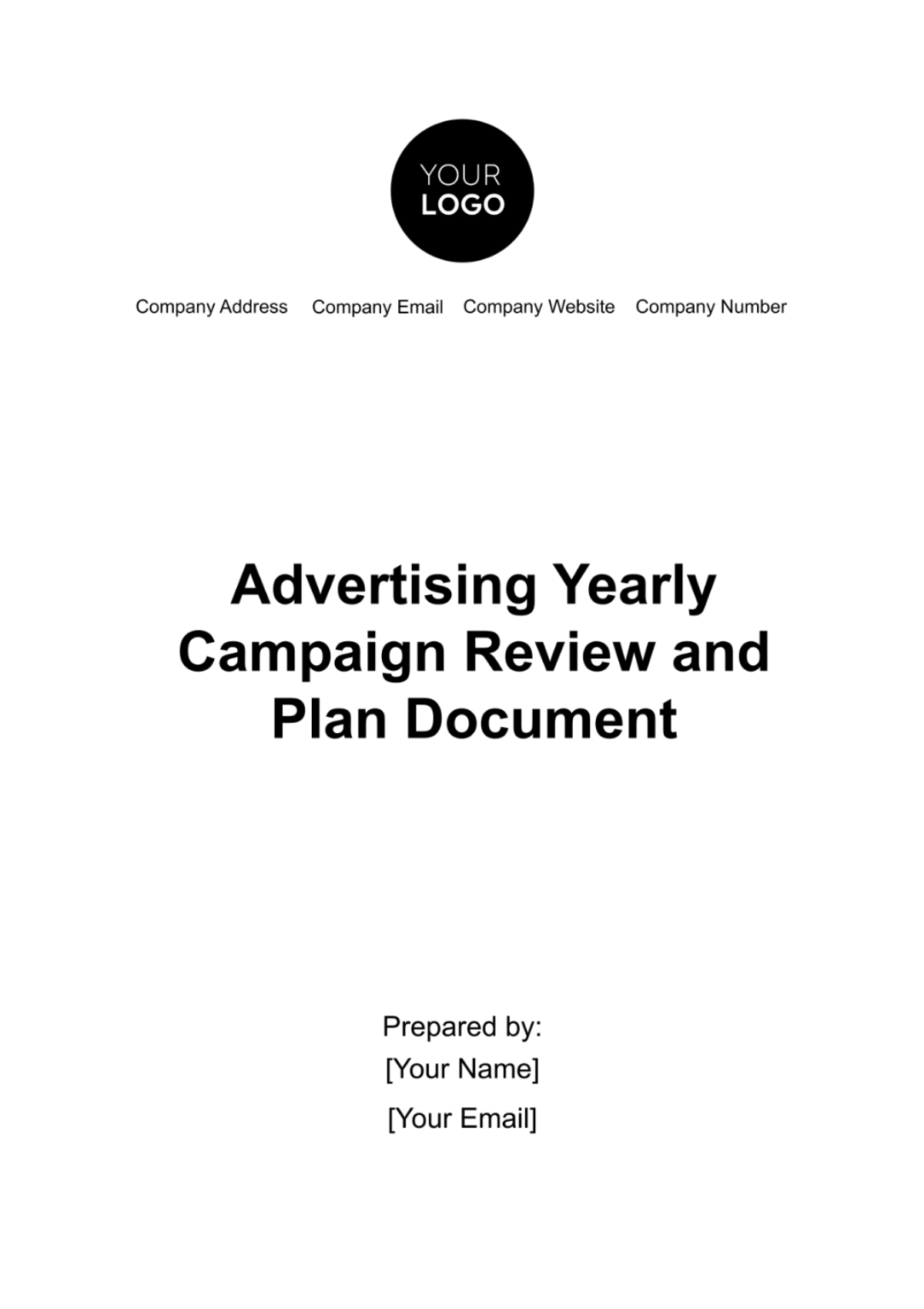
I. Executive Summary
A. [Your Company Name] Overview
[Your Company Name] is a leading technology company specializing in industry-specific products. Our mission is to revolutionize the tech industry through innovative solutions, and our vision is to be the go-to provider for cutting-edge technology. Our core values include excellence, customer-centricity, and continuous improvement.
B. Key Achievements
In the past year, [Your Company Name] achieved remarkable milestones in our advertising campaigns. We successfully launched several innovative marketing initiatives that significantly enhanced our brand visibility and engagement within our target audience. Notable achievements include:
Increased website traffic by 25% compared to the previous year, with 500,000 unique visitors and 2.5 million page views.
Social media engagement soared, with a 30% increase in likes, a 20% increase in shares, and 15% more comments compared to the previous year. Our follower base also expanded by 10%.
Conversion rates saw substantial improvements, with a 15% increase in lead generation and a 12% rise in sales conversion.
C. Challenges Faced
Despite our successes, we encountered several challenges throughout the year. These challenges included increased competition from emerging startups in our niche, changing consumer preferences towards eco-friendly products, and budget constraints. However, our adaptable team and data-driven approach allowed us to overcome these obstacles effectively.
D. Goals for the Upcoming Year
In the upcoming year, [Your Company Name] aims to build upon our achievements and further strengthen our market presence. Our key objectives for the upcoming year include:
Increase website traffic by 30% through targeted SEO and content marketing efforts.
Enhance social media engagement on Facebook by 25%.
Achieve a 20% increase in sales conversion rates through improved website optimization and user experience.
II. Yearly Campaign Review
A. Overview of Last Year's Campaign
Last year's advertising campaign was a comprehensive effort to increase brand visibility, engage with our target audience, and drive conversions. The campaign encompassed the launch of our latest [product name] and aimed to position it as the leading solution in the tech industry market.
B. Performance Metrics
Website Traffic
Website traffic data for the previous year showed remarkable growth. We received 500,000 unique visitors, representing a 25% increase compared to the previous year. Additionally, our website recorded 2.5 million page views, indicating a 30% increase in user engagement.
Social Media Engagement
Our social media engagement witnessed significant improvements. We experienced a 30% increase in likes, a 20% increase in shares, and 15% more comments compared to the previous year. Our follower base also expanded by 10%.
Conversion Rates
Conversion rates were a highlight of last year's campaign. We achieved a 15% increase in lead generation and a 12% rise in sales conversion rates, reflecting the effectiveness of our marketing strategies.
C. Marketing Channels Analysis
Online Advertising
Online advertising channels, including PPC campaigns and display ads, played a crucial role in driving traffic. We allocated a budget of $500,000 for online advertising, resulting in 2.5 million clicks and 10,000 conversions.
2. Email Marketing
Email marketing campaigns were effective in nurturing leads. Our email campaigns achieved an open rate of 20% and a click-through rate of 15%. We sent 100 email campaigns throughout the year.
Content Marketing
Content marketing efforts, such as blog posts, videos, and whitepapers, contributed to increased website traffic. We published 100 blog posts, 50 videos, and 10 whitepapers, which collectively generated 5,000 leads through informative and engaging content.
D. Customer Feedback and Surveys
To gauge customer satisfaction and collect feedback, we conducted 5 customer surveys throughout the year. Customers expressed appreciation for our product quality and highlighted a desire for more informative content related to our industry.
E. Competitive Analysis
Our competitive analysis revealed that we have a strong position in the market, particularly in product innovation and customer support. However, we identified areas for improvement, such as pricing competitiveness and expanding our product range to meet evolving customer needs.
F. Budget Review
The allocated budget for the previous year's campaign amounted to $1.5 million. A detailed review showed that we effectively utilized 85% of the budget, ensuring a positive return on investment (ROI).
III. Yearly Campaign Plan
A. Goals and Objectives for the Upcoming Year
In the upcoming year, [Your Company Name] is determined to achieve the following goals:
Increase website traffic by 30% through targeted SEO and content marketing.
Enhance social media engagement on Facebook by 25%.
Achieve a 20% increase in sales conversion rates through improved website optimization and user experience.
B. Target Audience Analysis
Our target audience consists of tech-savvy individuals aged 25-45, primarily professionals and entrepreneurs, interested in cutting-edge technology. Understanding their needs and preferences is crucial for tailoring our campaigns effectively.
C. Key Strategies and Tactics
Online Advertising
We will focus on optimizing online advertising campaigns, with an emphasis on retargeting and personalized ad creatives. We plan to allocate $600,000 (40% of the budget) to online advertising, aiming for 3 million clicks and 15,000 conversions.
Content Marketing
Content marketing will continue to be a cornerstone of our strategy. We will publish 150 blog posts, 75 videos, and 15 whitepapers, with an aim to generate 7,500 leads through informative and engaging content.
Social Media Marketing
Our social media marketing efforts will target Facebook with a consistent posting schedule and engagement strategies. We aim to achieve 25% growth in followers and a 20% increase in engagement through compelling content and interactive campaigns.
D. Marketing Budget Allocation
For the upcoming year, we have allocated a budget of $1.5 million. The budget allocation is as follows:
Online Advertising: $600,000 (40%)
Content Marketing: $450,000 (30%)
Social Media Marketing: $300,000 (20%)
Other Activities: $150,000 (10%)
E. Content Calendar
Our content calendar outlines a schedule for blog posts, videos, and whitepapers, ensuring consistent content production and timely distribution throughout the year.
F. Marketing Channels
We have selected the following marketing channels for our campaign:
Online Advertising on Google Ads and Bing Ads
Content Marketing on our blog, YouTube, and industry forums
Social Media Marketing on Facebook
G. Key Performance Indicators (KPIs)
Our KPIs for the upcoming year include:
Website traffic: 3 million unique visitors
Social media engagement: 25% increase in likes and shares
Sales conversion rates: 20% increase
IV. Partnerships and Collaborations
A. [Your Partner Company Name] Collaboration
In the upcoming year, [Your Company Name] is excited to continue its collaboration with [Your Partner Company Name], a renowned leader in the automotive technology industry. Our partnership with [Your Partner Company Name] has been instrumental in achieving our mutual goals and expanding our reach.
Objectives of the Collaboration
Our collaboration with [Your Partner Company Name] aims to achieve the following objectives in the upcoming year:
Cross-promote our cutting-edge automotive solutions to each other's customer bases, expanding our market presence.
Collaborate on joint marketing campaigns and events to increase brand visibility at industry conferences and exhibitions.
Share industry insights and knowledge to drive innovation and stay ahead of emerging automotive trends.
Expected Outcomes
Through this collaboration, we anticipate the following outcomes:
Increased brand recognition and trust among our respective customer bases, leading to a projected 15% increase in sales for both companies.
Enhanced lead generation and customer acquisition through joint marketing efforts, resulting in an estimated 20% growth in leads.
Greater industry influence and thought leadership through knowledge sharing, including joint webinars and whitepapers.
B. Upcoming Partnerships
In addition to our ongoing collaboration with [Your Partner Company Name], we are actively exploring new partnerships and collaborations in the coming year. These potential partnerships include:
Exploring joint ventures with emerging startups in the electric vehicle charging infrastructure sector to expand our product portfolio.
Partnering with industry associations, such as the Automotive Technology Association, to support and sponsor key events and conferences.
Investigating strategic alliances with complementary businesses in the automotive aftermarket to offer bundled solutions to customers.
V. Client Engagement
A. Client Engagement Strategies
Engaging our existing clients, subscribers, and users remains a top priority for [Your Company Name]. We recognize the value of retaining and nurturing our current customer base. In the upcoming year, we will implement the following strategies to enhance client engagement:
Personalized Communication
We will develop personalized communication strategies tailored to each customer segment. This includes sending targeted emails with product recommendations based on their previous purchases, preferences, and browsing history.
Customer Feedback and Support
Listening to our customers is paramount. We will continue to actively collect feedback through surveys and customer support interactions, addressing their concerns promptly and improving our services based on their input. Our goal is to achieve a customer satisfaction rating of 90% or higher.
Loyalty Programs
Introducing a loyalty program that rewards frequent customers with discounts, early access to new automotive solutions, and exclusive content. This program will incentivize continued engagement with our brand and is expected to increase customer retention by 15%.
B. Customer Relationship Management (CRM)
Our customer relationship management (CRM) system will play a central role in our engagement efforts. The CRM will enable us to:
Maintain detailed customer profiles and purchase histories, allowing us to personalize our interactions.
Automate personalized email campaigns, ensuring timely and relevant communication.
Provide customer support agents with a complete view of customer interactions, enabling more efficient issue resolution.
VI. Product Promotion
A. [Product Name] Promotion Strategies
The promotion of our innovative product, [Product Name], is a significant component of our yearly campaign plan. [Product Name] is a groundbreaking electric vehicle charging solution designed to revolutionize the EV charging experience.
Launch Campaign
We will execute a comprehensive launch campaign, leveraging various marketing channels, including online advertising, content marketing, and social media. Key elements of the campaign will include teaser videos showcasing the product's features, sneak peeks at its sleek design, and countdown promotions to create anticipation.
Influencer Collaborations
Engaging with industry influencers and experts in the electric vehicle and sustainable energy sector to endorse and promote [Product Name]. Their endorsements will provide social proof and broaden our reach within the target audience.
Limited-Time Offers
To incentivize early adoption, we will introduce limited-time offers, including a 15% discount on the purchase of [Product Name] for the first 500 customers. These offers will encourage quick action from potential customers, leading to an anticipated 30% increase in initial sales.
B. Product/Event Launch Plans
The launch of [Product Name] will follow a strategic plan, including:
Pre-launch activities, including teaser videos and social media teasers, to build anticipation.
Post-launch marketing, including customer testimonials and case studies, to sustain interest and engagement and maintain a steady stream of leads.
Our launch date for [Product Name] is set for April 26, 2050, and we are committed to making it a memorable event in our yearly campaign.
VII. Marketing Metrics and Performance Analysis
A. Key Performance Indicators (KPIs)
We will track several key performance indicators (KPIs) to measure the success of our advertising campaigns throughout the year. The following table summarizes the KPIs we will monitor:
KPI | Measurement | Target for the Year |
Website Traffic | Unique Visitors | 3 million |
Page Views | 15 million | |
Social Media | Likes (Facebook) | 50,000 |
Engagement | Shares (Facebook) | 20,000 |
Comments (Facebook) | 15,000 | |
Conversion Rates | Lead Generation Rate | 20% |
Sales Conversion Rate | 10% |
B. Data Analytics and Reporting
We will utilize data analytics tools to collect and analyze data regularly. This data will be used to generate performance reports, which will be distributed to the relevant teams for insights and decision-making. Our reporting schedule will include monthly, quarterly, and yearly reports.
VIII. Team Responsibilities
A. Marketing Team Responsibilities
The marketing team plays a crucial role in the successful execution of our advertising campaigns. The following table outlines the responsibilities of key team members:
Team Member | Responsibilities |
Marketing Manager | Overall campaign strategy, budget allocation, and planning. |
Content Specialists | Content creation, including blog posts, videos, and whitepapers. |
Social Media Managers | Social media content creation and engagement strategies. |
PPC Specialists | Management of online advertising campaigns and performance analysis. |
Email Marketing | Planning and execution of email marketing campaigns. |
Analysts | Data collection, analysis, and reporting on campaign performance. |
B. Resource Allocation
Effective resource allocation is crucial for campaign success. The following table summarizes the allocation of resources for the upcoming year:
Resource | Allocation Amount |
Budget | $1.5 million |
Marketing Team | 15 full-time employees |
Online Advertising | $600,000 (40% of budget) |
Content Marketing | $450,000 (30% of budget) |
Social Media | $300,000 (20% of budget) |
Other Activities | $150,000 (10% of budget) |
IX. Risk Analysis
A. Potential Risks
Identifying potential risks is essential to proactively address challenges that may arise during the campaign. The following table highlights potential risks:
Risk Description | Impact | Mitigation Strategy |
Increased Competition | High | Continuous market monitoring and agile strategy adjustments. |
Budget Constraints | Moderate | Regular budget reviews and reallocating resources based on performance. |
Changing Consumer Preferences | Moderate | Conducting market research to stay aligned with evolving trends. |
Technical Issues | Low | Implementing robust IT support and monitoring systems. |
External Economic Factors | Moderate | Diversifying revenue streams and adjusting strategies accordingly. |
B. Risk Mitigation Strategies
We have developed specific strategies to mitigate the identified risks:
Increased Competition: Continuous monitoring of competitors' activities, product differentiation, and agile adjustments to marketing strategies.
Budget Constraints: Regular budget reviews to optimize allocation, prioritize high-impact activities, and secure additional funding if necessary.
Changing Consumer Preferences: Ongoing market research and customer surveys to adapt products and marketing messages accordingly.
Technical Issues: Implementing robust IT support, regular system maintenance, and disaster recovery plans.
- 100% Customizable, free editor
- Access 1 Million+ Templates, photo’s & graphics
- Download or share as a template
- Click and replace photos, graphics, text, backgrounds
- Resize, crop, AI write & more
- Access advanced editor
Unlock the full potential of your marketing strategy with Template.net's Advertising Yearly Campaign Review and Plan Document Template. This editable and customizable template empowers you to meticulously analyze past campaigns, craft targeted strategies, and forecast future success. Enhance efficiency with our AI Editor Tool, ensuring precision and effectiveness in every marketing endeavor. Optimize your approach effortlessly.
You may also like
- Finance Plan
- Construction Plan
- Sales Plan
- Development Plan
- Career Plan
- Budget Plan
- HR Plan
- Education Plan
- Transition Plan
- Work Plan
- Training Plan
- Communication Plan
- Operation Plan
- Health And Safety Plan
- Strategy Plan
- Professional Development Plan
- Advertising Plan
- Risk Management Plan
- Restaurant Plan
- School Plan
- Nursing Home Patient Care Plan
- Nursing Care Plan
- Plan Event
- Startup Plan
- Social Media Plan
- Staffing Plan
- Annual Plan
- Content Plan
- Payment Plan
- Implementation Plan
- Hotel Plan
- Workout Plan
- Accounting Plan
- Campaign Plan
- Essay Plan
- 30 60 90 Day Plan
- Research Plan
- Recruitment Plan
- 90 Day Plan
- Quarterly Plan
- Emergency Plan
- 5 Year Plan
- Gym Plan
- Personal Plan
- IT and Software Plan
- Treatment Plan
- Real Estate Plan
- Law Firm Plan
- Healthcare Plan
- Improvement Plan
- Media Plan
- 5 Year Business Plan
- Learning Plan
- Marketing Campaign Plan
- Travel Agency Plan
- Cleaning Services Plan
- Interior Design Plan
- Performance Plan
- PR Plan
- Birth Plan
- Life Plan
- SEO Plan
- Disaster Recovery Plan
- Continuity Plan
- Launch Plan
- Legal Plan
- Behavior Plan
- Performance Improvement Plan
- Salon Plan
- Security Plan
- Security Management Plan
- Employee Development Plan
- Quality Plan
- Service Improvement Plan
- Growth Plan
- Incident Response Plan
- Basketball Plan
- Emergency Action Plan
- Product Launch Plan
- Spa Plan
- Employee Training Plan
- Data Analysis Plan
- Employee Action Plan
- Territory Plan
- Audit Plan
- Classroom Plan
- Activity Plan
- Parenting Plan
- Care Plan
- Project Execution Plan
- Exercise Plan
- Internship Plan
- Software Development Plan
- Continuous Improvement Plan
- Leave Plan
- 90 Day Sales Plan
- Advertising Agency Plan
- Employee Transition Plan
- Smart Action Plan
- Workplace Safety Plan
- Behavior Change Plan
- Contingency Plan
- Continuity of Operations Plan
- Health Plan
- Quality Control Plan
- Self Plan
- Sports Development Plan
- Change Management Plan
- Ecommerce Plan
- Personal Financial Plan
- Process Improvement Plan
- 30-60-90 Day Sales Plan
- Crisis Management Plan
- Engagement Plan
- Execution Plan
- Pandemic Plan
- Quality Assurance Plan
- Service Continuity Plan
- Agile Project Plan
- Fundraising Plan
- Job Transition Plan
- Asset Maintenance Plan
- Maintenance Plan
- Software Test Plan
- Staff Training and Development Plan
- 3 Year Plan
- Brand Activation Plan
- Release Plan
- Resource Plan
- Risk Mitigation Plan
- Teacher Plan
- 30 60 90 Day Plan for New Manager
- Food Safety Plan
- Food Truck Plan
- Hiring Plan
- Quality Management Plan
- Wellness Plan
- Behavior Intervention Plan
- Bonus Plan
- Investment Plan
- Maternity Leave Plan
- Pandemic Response Plan
- Succession Planning
- Coaching Plan
- Configuration Management Plan
- Remote Work Plan
- Self Care Plan
- Teaching Plan
- 100-Day Plan
- HACCP Plan
- Student Plan
- Sustainability Plan
- 30 60 90 Day Plan for Interview
- Access Plan
- Site Specific Safety Plan



